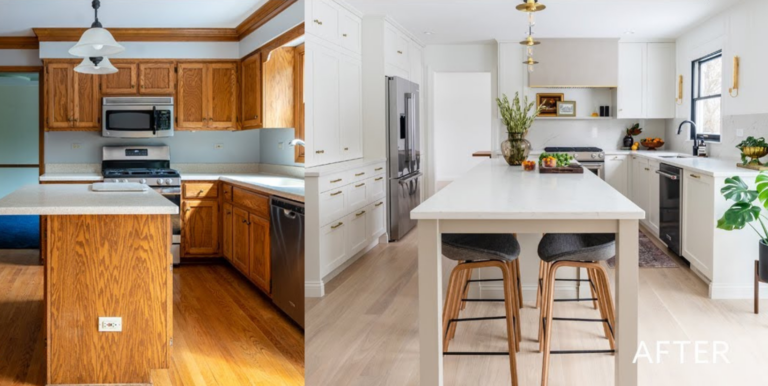Embrace the Journey: Homeownership as a Rewarding Adventure
We’ve all heard the saying that the journey of a thousand miles begins with a single step. This ancient wisdom holds true in many of life’s endeavors, not least of all in the journey to homeownership. For many millennials, this might feel like an insurmountable path, a thousand miles too long. Yet, it doesn’t have to be when making your first home purchase.
Yes, homeownership is a journey. It’s a series of steps, some small, some large, that will ultimately lead you to your destination: your own home. But unlike a thousand-mile trek, you won’t be traveling alone. You’ll have trusted advisors and helpful tools to guide you. From your mortgage lender to your real estate agent, to apps and articles that can help you make sense of it all – you’ll have a supportive team in your corner. Embrace this journey as not just a path to homeownership, but as a rewarding adventure that will teach you about financial responsibility, negotiation, and the real estate market.
First Things First: Getting Your Finances in Order For Your First Home Purchase
Before you can embark on this adventure, however, there’s an essential first step you must take: getting your finances in order. This step may not be as exciting as browsing through home listings or attending open houses, but it’s arguably the most critical part of the process. Here’s how to navigate it:
Check Your Credit Score
A credit score is like a financial passport. It’s a numeric representation of your creditworthiness based on your history of borrowing and repaying funds. Lenders will use this score to assess your reliability as a borrower.
A higher credit score opens the door to more favorable mortgage terms, including lower interest rates. This can result in significant savings over the lifetime of your loan. There are several ways you can check your credit score, including through your bank, credit card issuer, or free online services. If your score is lower than you’d like, don’t despair. There are steps you can take to improve it, such as paying your bills on time, reducing your overall debt, and keeping your credit card balances low.
Determine What You Can Afford
When thinking about what you can afford, it’s crucial to look beyond just the mortgage payments. There are other homeownership expenses that you’ll need to account for:
- Property Taxes: These taxes, imposed by local governments, can vary significantly depending on where you live. They can add a significant amount to your monthly costs.
- Home Insurance: Insurance will protect you from financial losses due to events like fires or natural disasters. The cost will depend on factors like the home’s location, age, and construction type.
- Maintenance Costs: Unlike renting, when something breaks in your home, you’re responsible for fixing it. Maintenance costs can also include regular expenses like lawn care or seasonal upkeep.
Save for a Down Payment
While you don’t necessarily need a 20% down payment, it’s beneficial to save as much as possible. A larger down payment means a smaller mortgage, which can make your monthly payments more manageable. It also means you’ll pay less interest over the life of the loan.
Moreover, if you can put down at least 20%, you can avoid paying Private Mortgage Insurance (PMI). PMI is a type of insurance that lenders require when borrowers put down less than 20%. It protects the lender if the borrower fails to repay the loan. By saving enough for a 20% down payment, you can free yourself from this extra monthly cost.
Find a Trusted Mortgage Lender
The right mortgage lender, like the LeaderOne Financial Roller Mortgage Team, can guide you through the pre-approval process and help you understand what you can afford. This step will also make you a more attractive buyer when it’s time to place an offer. The pre-approval process is crucial—it not only highlights your serious intent to sellers but also gives you a competitive edge in bustling housing markets. Plus, with a dependable lender, you’ll have transparent information about loan options and potential costs, empowering you to make confident decisions.
Making Your First Home Purchase: A Step-by-Step Guide for Millennials
Embarking on the journey to make your first home purchase may feel a bit like venturing into uncharted territory. However, the process can be broken down into clear steps, each integral to ensuring you find the perfect home within your budget. Here’s a step-by-step guide to help you navigate this journey with ease and confidence.
Step 1: Mortgage Pre-Approval – Start with a Solid Foundation
The first step of your home-buying journey should be securing a mortgage pre-approval. This process gives you a clear understanding of how much you can afford, shaping the boundaries of your home search. Additionally, it signals to sellers that you’re not just window shopping – you’re a serious buyer ready to negotiate.
Step 2: Home Search and Selection – Finding Your Perfect Match
Armed with a clear budget from your pre-approval, you can dive into the exciting part: searching for homes. This phase involves finding a home that fits your price range, aligns with your lifestyle needs, and feels like the right place for your future. You’ll also need to decide on your preferred type of house and the neighborhood that best suits your lifestyle, be it urban or suburban, bustling or serene.
Step 3: Making an Offer – Show Them You’re Serious
Once you’ve found a home that checks all your boxes, it’s time to show your interest by making an offer. Your real estate agent will be invaluable here, helping you determine a reasonable offer based on the home’s value, recent sales in the area, and the current market conditions.
Step 4: Home Inspection – Leave No Stone Unturned
After your offer is accepted, it’s time for the home inspection. This step is crucial for uncovering any hidden issues with the property. You’re about to make a significant investment, so it’s essential to ensure that there are no nasty surprises lurking in the foundations or the roof. A professional home inspector can help identify any potential problems that might require repair or negotiation.
Step 5: Closing the Deal – The Final Stretch
You’re almost there! The final step of your home buying journey is closing the deal. This is when you’ll sign all the necessary paperwork to officially transfer the property’s ownership. Once everything is signed and the keys are in your hand, it’s time to celebrate. You’ve successfully navigated the home-buying journey, and now you can enjoy the fruits of your efforts – your very own home!
Financing Options for Millennials: Making Your Dream Home a Reality
As a millennial venturing into the realm of homeownership, understanding your financing options is critical. There’s a plethora of choices available, each with its unique features. Here’s a look at some of the most popular mortgage options that can help you make your dream home a reality.
FHA Loans
FHA loans, insured by the Federal Housing Administration, are a favorite among first-time buyers. Their popularity stems from the lower down payment requirements, which can be as low as 3.5%, making it more feasible for younger buyers to enter the housing market. Plus, FHA loans are more forgiving of lower credit scores, making them an appealing option if your credit history is less than perfect.
Conventional Mortgages
Conventional mortgages are not insured by the government, unlike FHA loans. As such, they may come with more stringent requirements, but don’t let that deter you. If you’ve been diligent in maintaining a solid credit score and can afford a higher down payment, conventional mortgages could offer you attractive interest rates.
VA Loans
If you’re an active-duty military member or a veteran, VA loans are a remarkable option to consider. Guaranteed by the Department of Veterans Affairs, these loans come with favorable terms that are hard to ignore. One of the most attractive features is the potential for zero down payment, significantly reducing the upfront costs of purchasing a home. Moreover, VA loans do not require private mortgage insurance (PMI), reducing your monthly payments.
Understanding these financing options equips you with the knowledge needed to choose the best path for your unique situation. Whether you choose an FHA loan, a conventional mortgage, or a VA loan, remember that each option is a tool to help you achieve your homeownership dreams.
Frequently Asked Questions About Your First Home Purchase
When preparing for homeownership, it’s natural to have questions. To help you better navigate this process, we’ve compiled answers to some of the most frequently asked questions.
What’s the Best Way to Save for a Down Payment?
Saving for a down payment can seem like a daunting task, but several strategies can make it more manageable. Consider setting up automatic transfers to a savings account dedicated to your down payment, which allows you to save without thinking about it. Look for areas in your budget where you can reduce expenses, and allocate these savings towards your down payment fund. Finally, explore down payment assistance programs – both locally and nationally – that can help ease this financial burden.
How Do I Know How Much House I Can Afford?
A common rule of thumb is that your monthly housing costs – including mortgage payments, property taxes, and insurance – should not exceed 28% of your gross monthly income. However, it’s crucial to consider your other financial commitments and lifestyle expenses to ensure you can comfortably afford your home.
Do I Need a Real Estate Agent?
While not mandatory, a real estate agent can provide valuable expertise and insights during the home buying process. They can help you navigate the market, negotiate competitive offers, and guide you through the transaction’s complexities. Plus, they often have in-depth knowledge about neighborhoods and property values that you may not have access to.
What is the Importance of a Home Inspection?
A home inspection is a critical step in the home buying process. It involves a professional evaluating the property to identify potential issues such as structural problems or system failures. This process can save you from costly surprises after purchase, providing a clear picture of the home’s condition before you commit.
What are Closing Costs?
Closing costs include a variety of fees and charges associated with finalizing your mortgage. They typically range from 2% to 5% of the loan amount and can include things like appraisal fees, title insurance, and origination fees. It’s important to budget for these costs when planning your home purchase.
What is Private Mortgage Insurance (PMI)?
Private Mortgage Insurance, often abbreviated as PMI, is a type of insurance that you may be required to pay if your down payment is less than 20% of the home’s price. PMI is designed to protect the lender in case you default on your loan. The cost of PMI varies but is typically included in your monthly mortgage payment.
The LeaderOne Lowdown on Your First Home Purchase
Embarking on the adventure of making your first home purchase may appear overwhelming, particularly as a millennial in a complex housing market. However, armed with the right information and a systematic approach, this milestone can transform from a formidable challenge into a gratifying achievement.
Preparation is your friend on this journey. Devote time to organize your finances, understand your borrowing options, and familiarize yourself with the home buying process. Research should be your constant companion, informing every decision you make.
But remember, you’re not alone in this pursuit. Don’t hesitate to seek assistance, be it from a trusted mortgage lender like the LeaderOne Financial Roller Mortgage Team, an experienced real estate agent, or even family and friends who’ve navigated this journey before.
Making your first home purchase is not just about acquiring a property; it’s about building your future, brick by brick. So embrace this journey with patience and persistence, for your dream of homeownership isn’t a distant mirage – it’s just around the corner, waiting for you to arrive.








